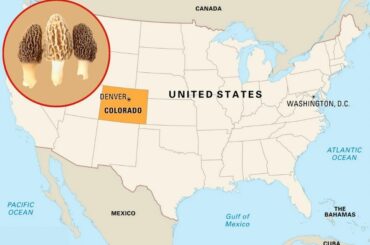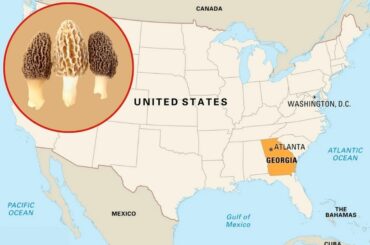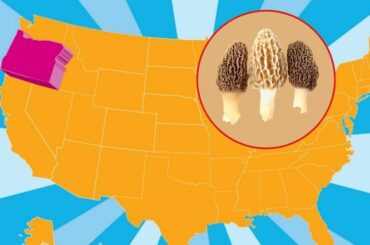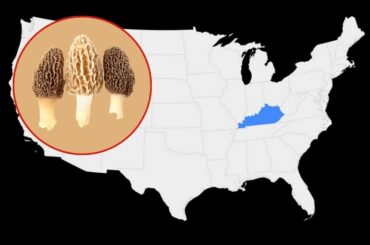Verpa bohemica is a well-known edible mushroom in Russia. Also known as “early morel,” this is one of several “false morel” species. The name “false morel” might frighten some people away from these delicious fungi. However, it simply means that they are not true morels (genus Morchella). Verpa bohemica is a member of the phylum Ascomycota, which contains some fascinating fungi.
So, what is Verpa bohemica, how does it look like, when and where can we find them, and how do we prepare them? Let’s take a closer look.
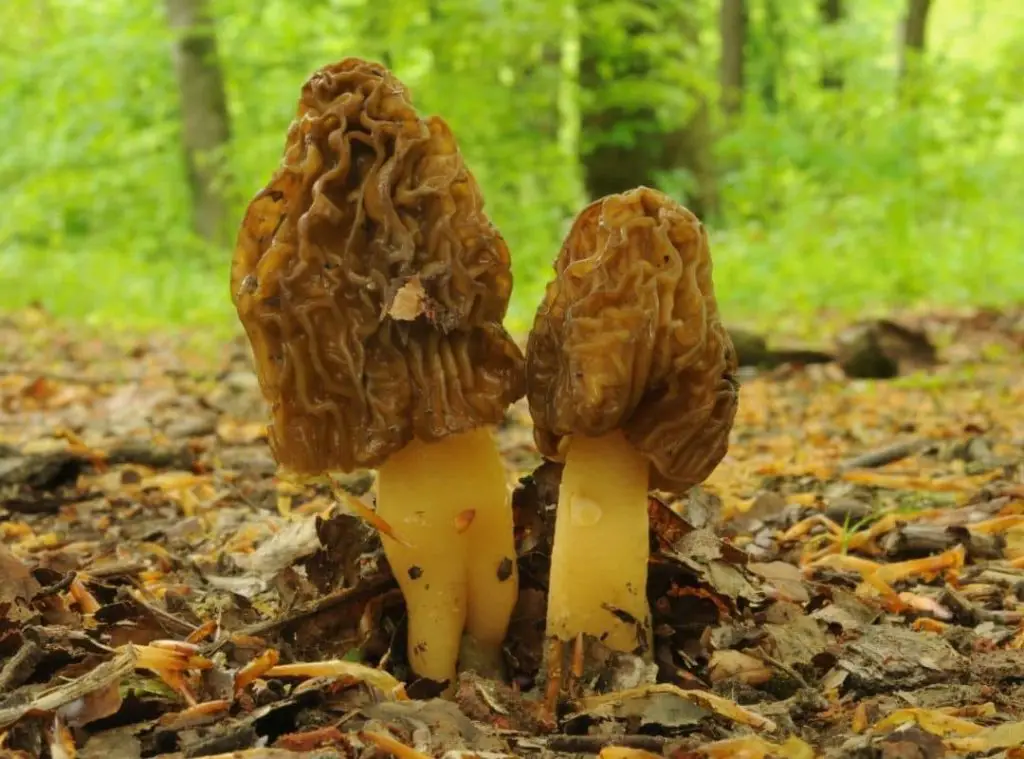
What is Verpa bohemica?
Contents
- 1 What is Verpa bohemica?
- 2 Verpa bohemica appearance
- 3 Verpa bohemica naming history
- 4 Is Verpa a morel?
- 5 Verpa bohemica vs. Morel
- 6 Can you eat Verpa bohemica?
- 7 Can you eat Verpa bohemica raw?
- 8 Where does Verpa bohemica grow?
- 9 When does Verpa bohemica grow?
- 10 Do false morels grow near true morels?
- 11 Verpa bohemica relationship with the trees
- 12 Verpa bohemica toxicity
- 13 How to cook Verpa bohemica?
- 14 Verpa bohemica taste
- 15 Verpa bohemica recipe
- 16 Precautions in eating Verpa Bohemica
- 17 Verpa bohemica look-alikes
- 18 Conclusion
They are an edible ascomycete mushroom belonging to the family Morchellaceae. It is one of the false morels, meaning that it is not a true morel (genus Morchella). Verpa bohemica has a distinctive brain-like or saddle-shaped fruit body with a hollow stem. The surface of the fruit body of this mushroom is wrinkled or lobed, and the inside is spongy. The spores are brown and elliptical. Like the true Morel, a spring mushroom, They can be found in deciduous forests across Europe and North America.
It typically fruits in early Spring, often before the true morels appear, hence the name “early morel.”Verpa bohemica is also known as “early false morel” or the “wrinkled thimble cap” and is often mistaken for the true Morel (Morchella esculenta). The two species can be distinguished by their appearance and habitat.
Verpa bohemica appearance
The appearance of them is much like the true Morel. However, there are distinct differences that can be used to identify this mushroom. The fruit body of Verpa bohemica is brain-like or saddle-shaped with a wrinkled or lobed surface. It is hollow and has a stem attached to the cap at the center or near the edge.
Size
Size-wise, they are smaller than the true Morel. The cap is typically 2-7 cm wide, and the stem is 3-10 cm long.
Color
The surface of the fruit body is tan to brownish in color. The inside is white or cream-colored.
Spores
The spores are brown and elliptical. They are typically 12-17 x 7-10 µm in size.
Cap
The cap is brain-like or saddle-shaped with a wrinkled or lobed surface. It is attached to the stem at the center or near the edge. The cap is typically 2-7 cm wide.
Stem
The stem is hollow and typically 3-10 cm long. It is attached to the cap at the center or near the edge.
Flesh
The inside of the fruit body is spongy and white or cream-colored.
Smell
It has a mild, pleasant smell.
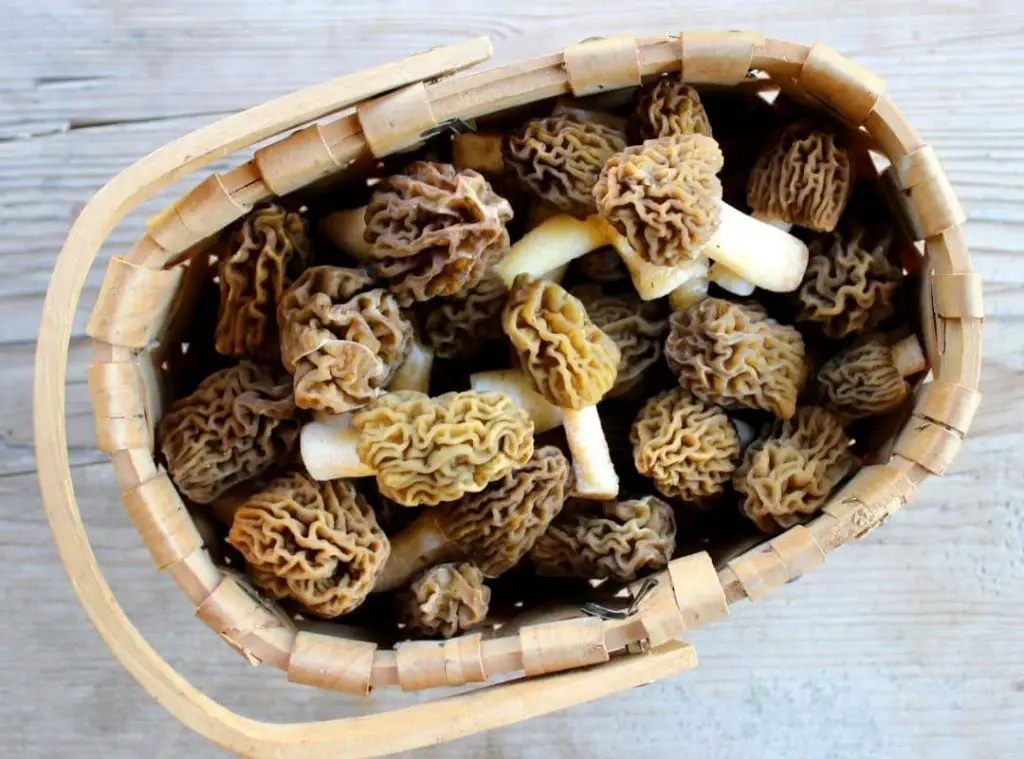
Verpa bohemica naming history
Mycologist Julius Vincenz von Krombholz was the first to describe these species in scientific literature. This Czech physician named this species “Morchella bohemica” in 1828, but the name was transferred to Verpa by the German Naturalist Joseph Schröter in 1893.
Ptychoverpa bohemica is a synonym introduced in 1907 by Frenchman Jean Louis Émile Boudier in his dissertation on the Discomycetes of Europe; the name is still used sometimes, particularly in European publications. According to Bouder’s belief, this species deserved a new dedicated genus because of the distinct differences such as curving ascospores and the rare and short paraphyses. Tychoverpa is sometimes categorized as a subgenus of Verpa. The thick longitudinal ridges on the cap, which can be simple or forked, distinguish the section.
Alfred Brooker Klugh identified the species in Canada shortly before 1910, where it was named with another name, Morchella bispora. The name bohemica derives from the place it was first found by Krombholz, which is in Bohemia (now a part of the Czech Republic).
Ptychoverpa is derived from the Greek word ptyx (genitive form ptychos), which means “fold,” “layer,” or “plate.” Apart from the scientific classification, this mushroom is commonly known by the names “early morel,” “early false morel,” and the “wrinkled thumble cap.”
Is Verpa a morel?
The short answer is no. It is not a true morel (genus Morchella). Verpa bohemica is a member of the false morel genus (genus Verpa) and is not considered a true morel.
Verpa bohemica vs. Morel
True morels (genus Morchella) have a number of distinguishing characteristics, including:
- A hollow stem
- A cap is attached at the stem apex (not attached at the base)
- A ridged or pitted cap surface
- spores that are attached to the inside of the cap rather than to the stem
In contrast, false morels (genus Verpa) have several characteristics that set them apart from true morels, including:
- A solid or partially hollow stem
- A cap is attached at the stem base (not attached at the apex)
- A wrinkled or brain-like cap surface
- spores that are attached to the stem rather than to the inside of the cap
So, while false morels may look similar to true morels at first glance, several key differences distinguish the two groups of fungi.
Can you eat Verpa bohemica?
Yes. You can eat Verpa bohemica. However, eating raw or in large quantities is not recommended. While false morels are not considered poisonous, they can cause gastrointestinal upset if eaten raw, consumed in large quantities, or improperly cooked. For this cause, it is usually advised to cook Verpa bohemica thoroughly before eating. When cooked, false morels can make a tasty addition to any meal.
Can you eat Verpa bohemica raw?
No, it is not advised to eat Verpa bohemica raw. False morels can cause gastrointestinal upset if eaten raw, consumed in large quantities, or improperly cooked. Verpa bohemica should be cooked thoroughly before consumption.
Where does Verpa bohemica grow?
Verpa bohemica can be found in North America, Europe, and Asia. This mushroom typically grows in forests on the ground near dead or dying trees. You can also find it in gardens, parks, and lawns. This mushroom prefers cool weather and typically fruits in the early Spring. It is found throughout North America, from the Midwest to the Great Lakes and from the West Coast to northern California. You can also find this mushroom in Austria, the Czech Republic, Denmark, Germany, Norway, Finland, Poland, Russia, Sweden, Slovakia, Spain, and Ukraine. It has been reported from India and Turkey in Asia.
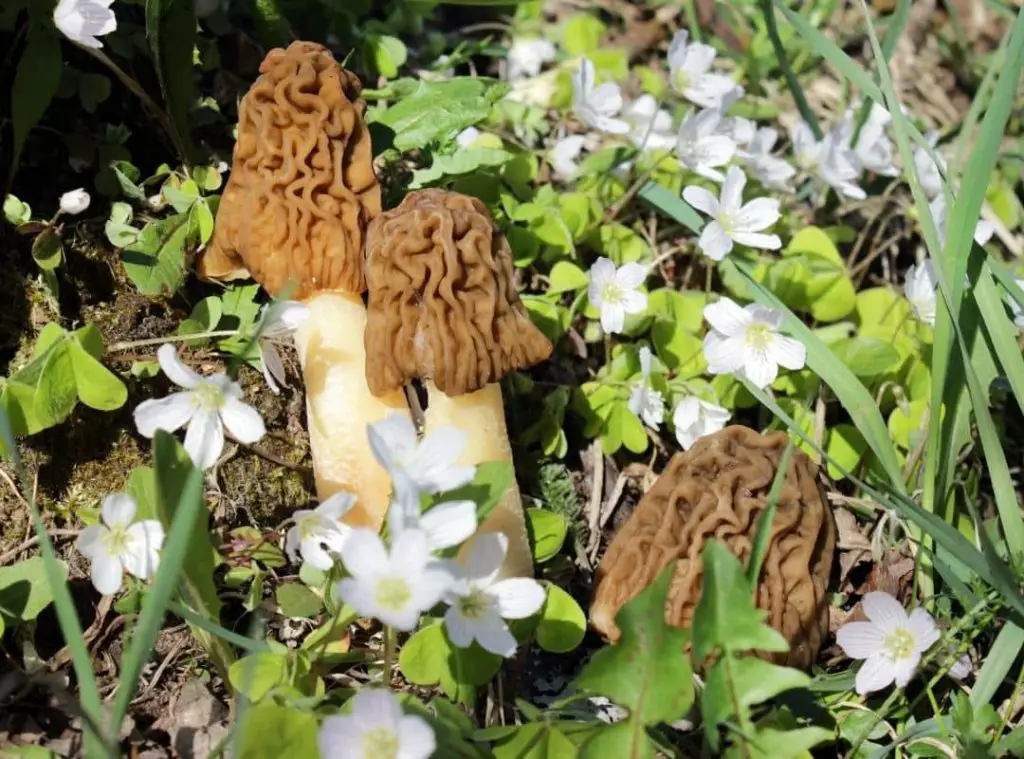
When does Verpa bohemica grow?
They grow early in the Spring on the ground in the woods near dead or dying trees. It is the first mushroom to appear in the Spring, where it grows when the deciduous trees begin to grow new leaves. Narrow-head morels (Morchella angusticeps) would be the second fruit, followed by yellow or white morels (Morchella esculenta), and finally, Morchella crassipes.
Verpa bohemica grows singly or in groups in the Spring before morels appear and throughout the morel season. It prefers moist areas with ample sunlight. Its minimum growing temperature is 3 °C (37 °F), with an ideal temperature of 22 °C (72 °F) and a maximum temperature of around 30 °C (86 °F).
Do false morels grow near true morels?
Yes. Often, You can find false morels growing in the same general area as true morels. However, false morels typically fruit a few weeks before true morels. So, if you’re out morel hunting and only find false morels, it’s a good indication that the true morels haven’t started fruiting yet.
Verpa bohemica relationship with the trees
Unlike many other ground mushroom types that have a symbiotic relationship with the trees, Verpa bohemica is a saprobic, which means it obtains nutrients from the decomposing matter around it. However, it is believed that Verpa bohemica is also mycorrhizal for at least a part of its life cycle.
Verpa bohemica toxicity
Verpa bohemica can cause gastrointestinal upset if eaten raw, eaten in large quantities, or improperly cooked. This mushroom should be cooked thoroughly before consumption. False morels have been known to cause gastrointestinal upset, liver damage, and even death in rare cases. Consequently, it is crucial to be 100% sure of a mushroom‘s identity before consuming it. If you are unsure, it is best to err on the side of caution and not eat it.
How to cook Verpa bohemica?
Unlike other edible mushrooms, you can not pick it up and cook it right away. You have to parboil the mushroom before preparing. Cut the Verpa bohemica into small pieces and boil in water for 10 to 15 minutes to parboil. After parboiling, early morels can be sauteed, baked, grilled, or fried.
Verpa bohemica taste
Verpa bohemica does not taste like true morels and has an earthy taste. Still, many like the taste of this mushroom when stuffed with other meats, especially seasoned pork.
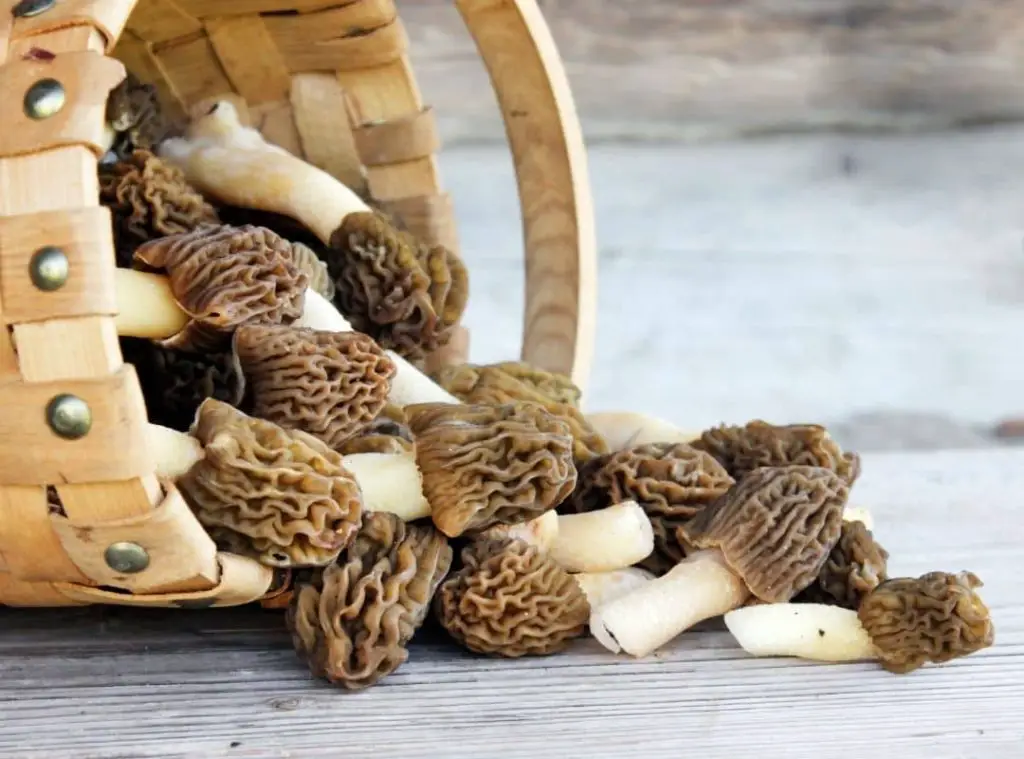
Verpa bohemica recipe
Since this mushroom is considered toxic in the US culture, there are not many Verpa bohemica recipes available on the internet. This recipe shared by “Cooking to Entertain” is the only recipe I could find.
Precautions in eating Verpa Bohemica
Although this mushroom is edible, preparing it without parboiling and overeating is not safe as Verpa bohemica is believed to contain a Gyromitrin-like toxin that can cause gastrointestinal upsets. It can also cause liver damage and, in rare cases, death. Boiling the mushroom in a large quantity of water for several minutes releases the toxin from the mushroom; hence it becomes safe to eat. Still, it may contain small amounts of toxins which can affect when consumed in large quantities.
We advise you to eat only a small portion of Verpa bohemica first to check if there are any allergic reactions before consuming larger portions. If you experience any gastrointestinal upsets such as nausea, vomiting, and diarrhea after eating this mushroom, Seek medical assistance right away because it can lead to dehydration.
Experts advise not to eat Verpa bohemica for several days in a raw as it may cause indigestion. Cooking the mushroom properly before consuming it is the best way to enjoy its taste and avoid health hazards. Although this mushroom is safe to eat, some might have severe allergies to them. For those who have allergies to any kind of mushroom, it is best to stay away from Verpa bohemica and other false morels.
Verpa bohemica look-alikes
There are several Verpa bohemica look likes. The most common look-alikes are the Gyromitra esculenta (false Morel) and Verpa conica (early Morel). Both of these mushrooms can be easily confused with Verpa bohemica as they all have a cap attached to the stem at the bottom. The best way to distinguish these three mushrooms is by looking at the cap. Verpa bohemica has an entirely smooth and spherical cap, while both Gyromitra esculenta and Verpa conica have a cap with wavy or wrinkled edges.
Another way to distinguish these mushrooms is by looking at the stem. The stem of Verpa bohemica is short and thick, while the stems of both Gyromitra esculenta and Verpa conica are long and thin. Lastly, Verpa bohemica has a hollow stem, while both Gyromitra esculenta and Verpa conica have a stem that is filled with spongy tissue. Verpa bohemica is easily confused with Morchella esculenta, the true Morel. The best way to distinguish these two mushrooms is by looking at the cap.
Verpa bohemica has a completely smooth and spherical cap, while Morchella esculenta has a cap with wavy or wrinkled edges.
Conclusion
Verpa bohemica is a false morel that is found in North America. This mushroom is considered toxic and should be parboiled before consumption. Although it is safe to eat, some might have severe allergies to them. For those who have allergies to any kind of mushroom, it is best to stay away from Verpa bohemica. If you are planning on consuming this mushroom, it is best to cook it properly and eat only a small portion first to check if there are any allergic reactions.
If you experience any gastrointestinal upsets such as nausea, vomiting, and diarrhea after eating this mushroom, Seek medical assistance right away because it can lead to dehydration.

